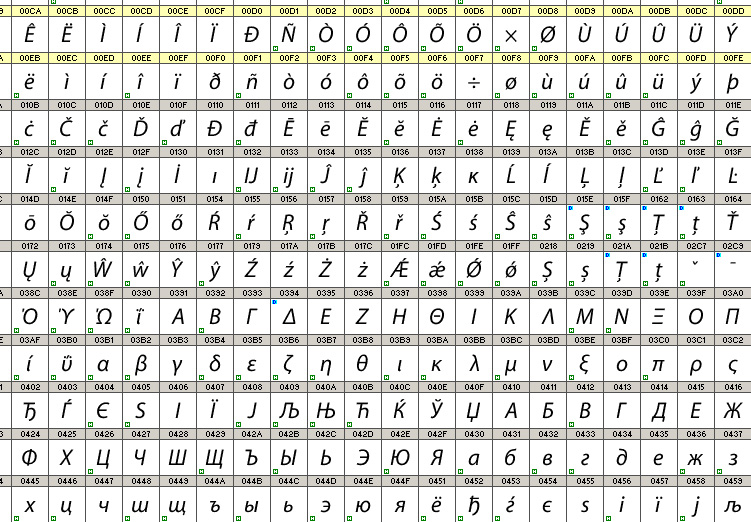Glyph
A primitive example of a glyph is an arrow whose visual attributes length, width, angle, and color might be used to encode four different data attributes in a single graphical object.
The most prominent example for glyphs are Chernoff Faces [Chernoff, 1973], where the different parts of a conceptualized human face (mouth, nose, head, eyes, eyebrows, etc.) encode different dimensions of an n-dimensional data set.
Advantages of glyph representations are foremost their easy learnability, long remembering periods, and the possibility to represent value restrictions visually, especially when multiple attributes are involved.
Synonyms
- Metaphor Graphic
Glyphs in Typography

A character is a textual unit, whereas a glyph is a graphical unit. Sometimes several characters or only parts of one glyph — consider ligatures as an example.
References
- [Chernoff, 1973]: Chernoff, Herman. The Use of Faces to Represent Points in k-Dimensional Space Graphically, Journal of the American Statistical Association, 68: 361-368, 1973.